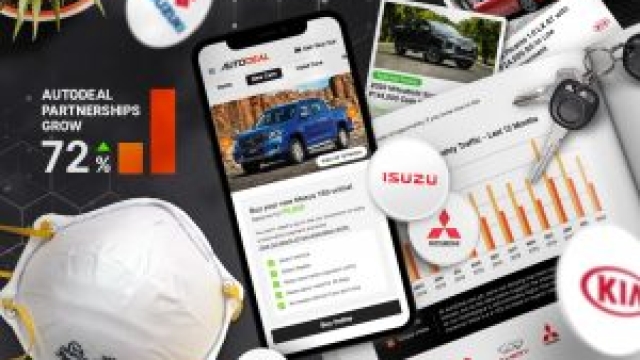
Revving up the Automotive Retail Experience
As the automotive industry continues to evolve, so does the automotive retail experience. Gone are the days where car dealerships were merely places to browse vehicles and negotiate prices. Today, automotive retail has transformed into an immersive experience where customers can explore, compare, and customize their dream cars.
With the rise of digital technology, the automotive retail landscape has undergone a significant shift. Online tools and resources have paved the way for a more informed and empowered consumer base. From research and price comparisons to virtual showrooms and interactive configurators, potential buyers now have access to a wealth of information right at their fingertips.
Automotive retail guides have become invaluable resources for customers navigating this ever-changing landscape. These guides provide essential information about the purchasing process, financing options, warranty details, and more. They offer insights and tips to help buyers make well-informed decisions, ensuring a smoother experience from start to finish.
In this article, we will delve into the world of automotive retail, providing you with a comprehensive guide and valuable information to enhance your buying journey. By understanding the various aspects of the automotive buying process, from researching and test-driving to negotiating and finalizing the deal, you will be equipped with the knowledge to navigate this exciting industry confidently.
So, buckle up and get ready to rev up your automotive retail experience. Whether you are a first-time buyer or a seasoned car enthusiast, this article is designed to be your GPS, guiding you through the twists and turns of the automotive retail world. Let’s dive in and discover how to make the most of your car-buying adventure.
Technological Innovations in Automotive Retail
The automotive retail industry has witnessed significant advancements in technology, revolutionizing the way vehicles are bought and sold. These technological innovations are not only enhancing the overall customer experience but also streamlining the operations for automotive retailers.
One such innovation is the integration of virtual reality (VR) technology into the automotive retail process. By utilizing VR, customers can now explore, customize, and even test drive vehicles without physically being present at the dealership. This immersive experience allows customers to visualize themselves inside the car, understand its features, and make informed decisions from the comfort of their homes.
Furthermore, the use of augmented reality (AR) has also gained prominence in automotive retail. With AR, customers can overlay digital information such as product specifications, pricing details, and even user reviews onto their physical environment. This technology enables customers to seamlessly bridge the gap between the online and offline automotive retail experience, making it easier for them to compare different models and make confident purchasing decisions.
In addition to VR and AR, artificial intelligence (AI) has become an indispensable tool for automotive retailers. AI-powered chatbots and virtual assistants are increasingly being used to provide instant support and personalized recommendations to customers. These intelligent systems can answer customer queries, assist with scheduling test drives, and even help with post-purchase services. By leveraging AI, automotive retailers are streamlining their customer interactions, improving response times, and ultimately enhancing customer satisfaction.
As the automotive retail industry continues to evolve, technological innovations are playing a crucial role in transforming the customer experience. Through the integration of VR, AR, and AI, automotive retailers are able to provide a more immersive, informative, and personalized retail experience to customers, ultimately allowing them to make confident and well-informed purchasing decisions.
Automotive Parts Store
2. Improving Customer Experience in Automotive Retail
Today, automotive retail is not just about selling cars; it’s about creating a seamless and enjoyable experience for customers. In this section, we will explore some effective strategies to enhance the customer journey in automotive retail.
Firstly, a vital aspect of improving the automotive retail experience is to offer personalized assistance and expert guidance. Customers often have specific requirements and preferences when it comes to purchasing a vehicle. By assigning knowledgeable sales representatives who understand the diverse needs of customers, automotive retailers can provide tailored recommendations and valuable insights. This personalized approach fosters trust and helps customers make well-informed decisions.
Secondly, leveraging technology can greatly enhance the automotive retail experience. Digital advancements have revolutionized the industry, allowing retailers to streamline various processes and provide convenience to customers. For instance, integrating online platforms and apps that enable customers to browse inventory, compare prices, and even schedule test drives can significantly improve the overall buying experience. Moreover, utilizing virtual reality or augmented reality solutions can provide customers with immersive experiences, allowing them to visualize different models or customize their desired features.
Lastly, creating a pleasant and inviting atmosphere within automotive retail spaces is essential. Customers should feel welcomed and comfortable as they explore the showroom or interact with staff. This can be achieved through inviting interior designs, comfortable seating areas, and amenities such as complimentary refreshments. Additionally, well-trained and friendly staff members who actively engage with customers create a positive impression and build lasting relationships.
By focusing on improving customer experience through personalized assistance, embracing technology, and creating inviting spaces, automotive retailers can enhance the overall journey of their customers. These strategies not only contribute to increased customer satisfaction but also establish brand loyalty and generate positive word-of-mouth referrals.
3. Enhancing Sales and Service Processes in Automotive Retail

In order to enhance the sales and service processes in automotive retail, it is crucial for businesses to stay up to date with the latest trends and technologies. By incorporating these advancements, automotive retailers can streamline their operations and provide a more efficient and personalized experience for their customers.
One way to enhance sales processes is through the use of digital tools and platforms. Online car configurators allow customers to customize their desired vehicle with various options and features, providing them with a more interactive and engaging shopping experience. Additionally, implementing customer relationship management (CRM) systems can help businesses track and manage customer information, allowing for better targeting and follow-up during the sales process.
Another aspect that can greatly improve the automotive retail experience is the integration of technology in the service department. Service scheduling apps and online portals enable customers to conveniently book appointments and track the progress of their vehicle repairs. Moreover, incorporating diagnostic tools and software can aid technicians in identifying and resolving issues quickly and accurately, leading to improved service quality and customer satisfaction.
Furthermore, embracing data analytics can provide valuable insights into customer behavior and preferences. By analyzing customer data, automotive retailers can tailor their marketing strategies and product offerings to better meet the needs and desires of their target audience. This data-driven approach can also enable businesses to identify potential upselling and cross-selling opportunities, further enhancing their sales processes.
Overall, enhancing sales and service processes in automotive retail requires a proactive approach towards integrating technology and data-driven solutions. By embracing these advancements, businesses can improve efficiency, customer satisfaction, and ultimately drive growth in the competitive automotive retail industry.

